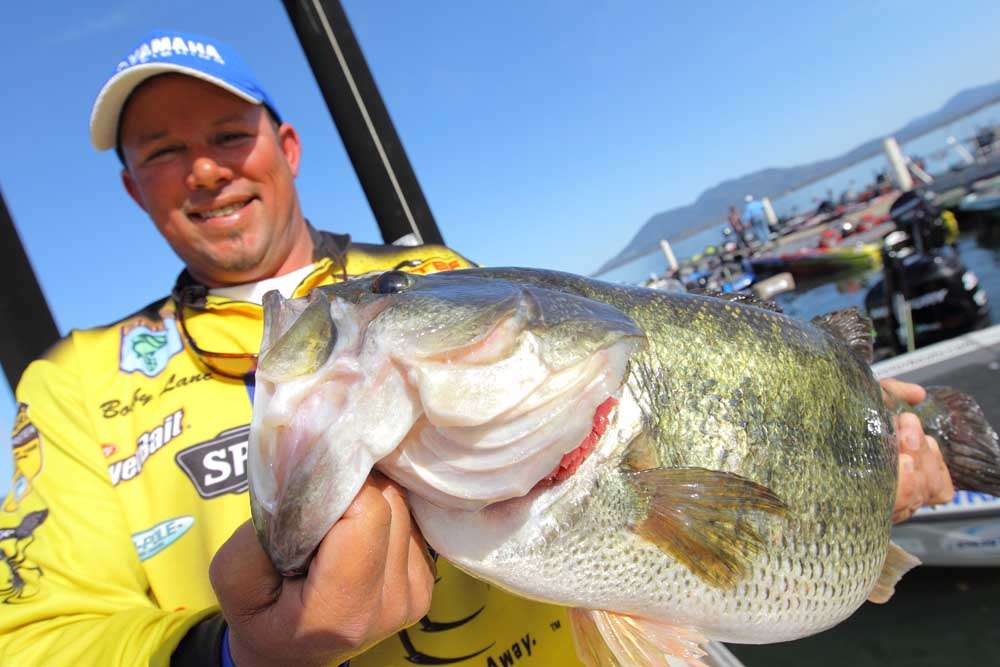
Florida native Bobby Lane knows how to catch big, spawning female bass.
He’s boated nearly thirty 10-pounders in his life, and many of those came off beds. His biggest, an 11.8, was caught from Lake Toho in a tournament in which he caught four over 10 pounds.
“I’ve spent a lot of time studying big spawners and learned a lot about how they react and what it takes to catch them,” said Lane. “These are tactics I’ve found to work all around the country — not just in Florida.”
Be stealthy
Giant bass don’t grow big being stupid. That doesn’t mean you can’t catch one on your first cast, but it does mean you need to move stealthily.
“Big bass tend to spawn in the same areas of a lake,” he explained. “When I go in those areas, I do so as quietly and unnoticed as possible.”
If the water is deep enough, or he’s just looking for bedding activity, Lane uses his trolling motor at a slow speed and avoids turning it on and off. However, in ultra shallow water, he prefers using a push pole, easing himself along while scanning the bottom for the fish or beds.
“Big fish like to spawn shallow — less than a foot and half at times,” he offered. “A trolling motor not only disturbs the water, but stirs up the bottom.”
He keeps his back to the sun, and he turns off his sonar to eliminate the underwater pinging noise the graph emits.
“Your success will go up 85 percent by simply keeping the sun to your back and limiting movements and noises,” he added.
Assess the area
When a bed or big bass is spotted, Lane assesses the area around it.
“If a bass leaves the bed when spooked, I will watch her and look at nearby cover and bottom to determine what she might do,” he described.
A spooked bass will be watching you, he added, so remain still. Think about where she will seek comfort before moving back to the bed.
“Also, make sure there isn’t a male bumping on the female because you’re probably not going to catch that fish,” added Lane. “Mark the bed and come back to her at a later time.”
Be patient
Most anglers are too anxious to cast at a bass that’s moving on or off a bed. If a fish spooks, Lane will watch the direction she enters and leaves the bed and cast to it only when he believes she isn’t looking. He doesn’t want her to see the bait go in.
“I let the bait sit on the bed until the bass comes back and don’t move it until she settles down,” Lane described. “You’ve got to make her feel it’s safe.”
If she's swimming around the bed or appears to be jittery, he hesitates.
“When she's calm, I'll barely move or wiggle the bait to see if I get a reaction,” he described. “I’m less concerned about the bait and more observant of the fish.”
He watches for the fish’s tail to quiver or for her to spin and look at the bait. That’s an indication she’s ready to bite it.
“If she swims off, I might wait her out and repeat the action when she comes back,” Lane offered. “But if she moves off again, I’ll probably leave her alone, and come back and try in the afternoon when the water is a little warmer or the fish is a little more active.”
Originally published April 2013





